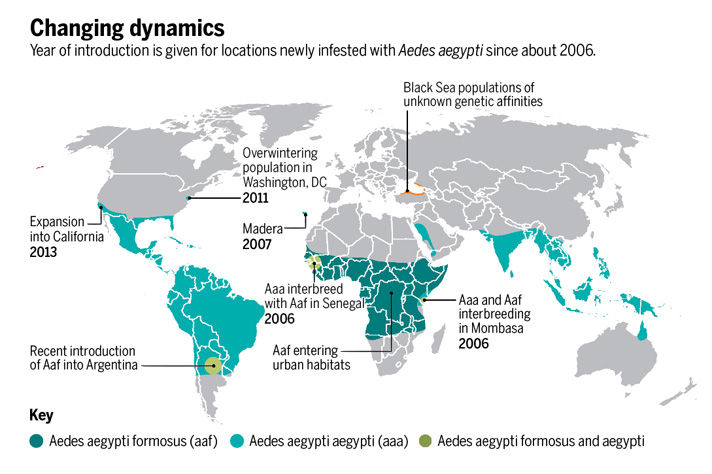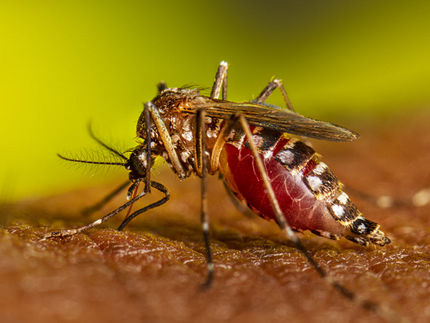Zika-bearing mosquitoes quickly invade and adapt to new environments
Advertisement
The Zika-bearing mosquito Aedes aegypti is not only spreading rapidly but has shown a remarkable ability to adapt quickly to different locales and climates, according to Jeffrey Powell, professor of ecology and evolutionary biology and environmental health sciences.

Distribution and lifestyles of Aedes Aegypti populations
Yale University
The mosquito species, which also transmits yellow fever and chikungunya, has reached as far north as northern California and southern Georgia, Powell reports in a review of science studies published Nov. 25 in the journal Science. A pocket of overwintering mosquitoes was also discovered in Washington D.C.
“This is a dynamic species that is changing rapidly as it adapts to human activities,” Powell said. For instance, Aedes aegypti apparently survives colder winters in Washington D.C. by entering sewers, which it does not do in other habitats. In California, the drought may have driven mosquitoes to more populated areas with water sources such as swimming pools. The species often hitchhikes on products such as ornamental plants or used tires, which are shipped to other parts of the world. And a more benign and close genetic cousin found mostly in sub-Saharan Africa appears to be interbreeding with its more aggressive relative, increasing the risk for the spread of yellow fever in those areas, said the Yale researcher.
Powell and colleagues at Yale are studying genetics of the mosquitoes to pinpoint their source of origin.
“We are getting warmer and it won’t take much before mosquitoes expand their northern limits,” Powell said.
Most read news
Organizations
Other news from the department science

Get the life science industry in your inbox
By submitting this form you agree that LUMITOS AG will send you the newsletter(s) selected above by email. Your data will not be passed on to third parties. Your data will be stored and processed in accordance with our data protection regulations. LUMITOS may contact you by email for the purpose of advertising or market and opinion surveys. You can revoke your consent at any time without giving reasons to LUMITOS AG, Ernst-Augustin-Str. 2, 12489 Berlin, Germany or by e-mail at revoke@lumitos.com with effect for the future. In addition, each email contains a link to unsubscribe from the corresponding newsletter.



















































